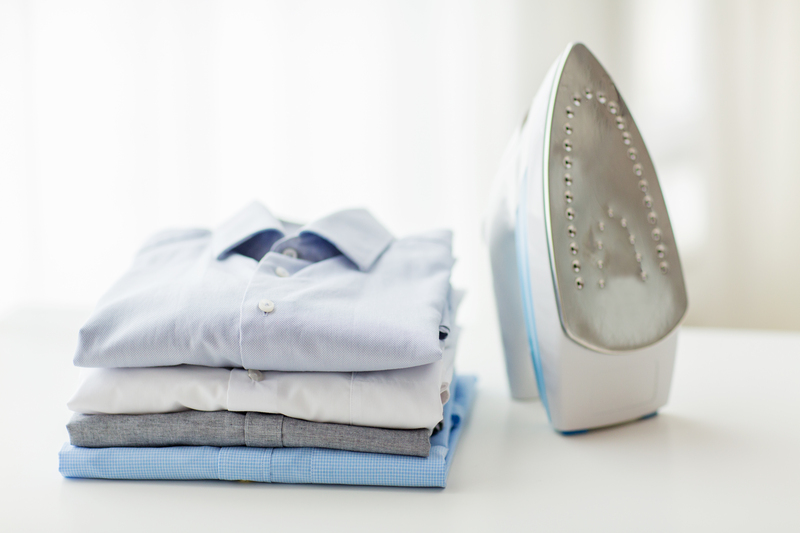Steam Cleaning vs Traditional Methods for Leather Sofas
Posted on 18/05/2025
Steam Cleaning vs Traditional Methods for Leather Sofas: An In-depth Comparison
When it comes to leather sofa maintenance, homeowners are often faced with a crucial decision: Is it better to steam clean or use traditional cleaning methods? With the value and aesthetics that leather furniture provides, understanding the merits and drawbacks of each cleaning technique is essential for prolonging the life and beauty of your investment. This article offers a thorough and unbiased look at steam cleaning vs traditional methods for leather sofas, equipping you with the knowledge to choose the best care for your cherished furniture.

Understanding Leather Sofas: Properties and Care Challenges
Leather sofas are prized for their durability, elegance, and timeless appeal. However, they are also susceptible to stains, scratches, fading, and the accumulation of dirt and oils over time. The right care methods are critical for avoiding unnecessary wear or premature aging.
Types of Leather Used in Sofas
- Aniline Leather: Delicate and natural, absorbs liquids quickly, requires gentle cleaning.
- Semi-Aniline Leather: Slightly more protected than aniline, yet still sensitive to harsh methods.
- Protected/Pigmented Leather: Treated with a protective coating and more resilient to stains.
Knowing your sofa's leather type is crucial before choosing between steam cleaning and traditional cleaning techniques.
What is Steam Cleaning?
Steam cleaning is a modern approach that utilizes high-temperature steam to sanitize and lift dirt from surfaces. In the context of leather furniture steam cleaning, a specialized steamer gently emits vapor without saturating the leather, aiming to break down grime and kill bacteria.
How Does Steam Cleaning Work?
- Water heats in a reservoir to produce high-temperature steam.
- Vapor is directed through a nozzle or brush attachment onto the sofa's surface.
- The heat and moisture loosen embedded dirt, oils, and bacteria.
- A microfiber cloth is often used to capture lifted debris.
Unlike conventional washing, steam cleaners do not require additional chemicals. This makes steam cleaning leather sofas an eco-friendly option that minimizes exposure to harsh substances.
Traditional Cleaning Methods for Leather Sofas
Traditional cleaning involves established techniques, typically centered around wiping, vacuuming, and using leather-specific soaps and conditioners. These methods are time-tested but can vary in efficacy, especially for deeply ingrained grime or stains.
Popular Traditional Methods Include:
- Vacuuming: Removing crumbs and loose dirt with a soft brush attachment.
- Damp Wiping: Wiping with a slightly damp, lint-free cloth to clean surface dust and easy stains.
- Leather Soap: Applying specially formulated leather soap or mild detergent to lift dirt, followed by thorough drying.
- Conditioning: Using leather conditioners to replenish oils and maintain suppleness.
The focus of traditional cleaning is gentle maintenance--preserving leather's finish, preventing cracks, and ensuring ongoing flexibility. However, some traditional methods may leave residues, cause over-wetting, or lack deep sanitization power.
Steam Cleaning vs Traditional Leather Sofa Cleaning: Pros and Cons
Steam Cleaning: Advantages
- Deep Sanitization: Kills a broad spectrum of germs, dust mites, and bacteria without chemicals.
- Eco-Friendly: Uses only water, avoiding potentially damaging cleaning agents.
- Removes Odors: Effectively neutralizes unpleasant smells embedded within the leather.
- Efficiency: Saves time by loosening and lifting dirt in a single pass.
- Great for Allergy Sufferers: Reduces allergens harbored in soft surfaces.
Steam Cleaning: Disadvantages
- Risk of Overheating: Excessive heat can damage certain leathers, especially fine aniline hides.
- Incorrect Technique: Poor use may leave too much moisture, leading to mold, warping, or discoloration.
- Not Suitable for All Leathers: Some delicate finishes can be ruined by even low levels of moisture and heat.
Traditional Cleaning: Advantages
- Tested Over Time: Less risk when following manufacturer guidelines.
- Safe for All Types: Customizable to the type and condition of leather.
- Preserves Finish: Proper conditioning maintains the softness and appearance.
- Minimal Equipment Needed: Does not require specialized devices.
Traditional Cleaning: Disadvantages
- Surface-Level Cleaning: May not remove deeply ingrained dirt or kill germs.
- Time Consuming: Careful wiping, cleaning, and conditioning require patience.
- Product Sensitivity: Incorrect soaps or conditioners can harm the leather.
When to Choose Steam Cleaning for Leather Sofas?
Steam cleaning is ideal for:
- Heavily Soiled Sofas: When grime, pet dander, or odors need robust removal.
- Allergy Prevention: Households needing high levels of sanitization.
- Quick Turnaround: Situations requiring efficient, chemical-free cleaning.
However, it's crucial to check manufacturer recommendations and always test a small, inconspicuous area first. Professional steam cleaning services are recommended for high-value or delicate leather furniture, as they are trained to safely apply the correct amount of heat and moisture.
When to Prefer Traditional Leather Sofa Cleaning?
Traditional cleaning methods excel for:
- Routine Maintenance: Regular upkeep for lightly soiled sofas.
- Delicate and Uncoated Leathers: Sofas with minimal protective finish that can't tolerate moisture.
- Personalized Conditioning: Custom treatments to address dryness, cracks, or fading.
Always use products designed specifically for your sofa's leather type--including pH-balanced soaps and conditioners--to avoid damage and preserve the natural surface.
Steam Cleaning Leather Sofas: Step-by-Step Guide
If you decide that steaming your leather sofa is safe, follow these expert tips:
- Vacuum First: Use a soft brush attachment for dust and grit removal.
- Patch Test: Always test the steamer on a hidden area to ensure no adverse effect.
- Set Steam Level: Use the lowest steam output and keep the nozzle moving to avoid overheating.
- Microfiber Wipe: Quickly wipe away loosened dirt and moisture as you go.
- Ventilate and Dry: Ensure ample ventilation for the sofa to air dry thoroughly.
- Condition: After cleaning, apply a suitable leather conditioner to restore oils and shine.
Never let the steam linger too long in one spot, and avoid direct contact on seams or stitching.
Traditional Leather Sofa Cleaning: Best Practices
- Regular Dusting: Dust the leather weekly with a microfiber cloth.
- Monthly Wipe-Down: Use a damp (not wet) cloth with distilled water for gentle cleaning.
- Stain Treatment: Immediately blot spills; use leather cleaner for tougher marks.
- Seasonal Conditioning: Apply conditioner every 3-6 months to prevent drying and cracking.
- Avoid Sun and Heat: Place sofas out of direct sunlight and away from heat sources.
Traditional cleaning emphasizes prevention--keeping dirt and spills under control so deep cleaning is needed less frequently.
Tips to Maximize the Lifespan of Your Leather Sofa
- Rotate cushions every few weeks for even wear.
- Use arm and headrest protectors if possible.
- Keep pets' claws trimmed to prevent scratches.
- Promptly address stains before they set in.
- Never use ammonia, bleach, or harsh solvents on leather.
- Keep humidity stable in your home to prevent leather from drying out.
Cost and Convenience: Steam Cleaning vs Traditional Methods
Which approach is more affordable and convenient? Steam cleaners may require a significant initial purchase or the hiring of a professional service, but they can save time and reduce ongoing costs for cleaning agents. Traditional methods are less expensive up front and accessible to all, but may be less thorough and more labor-intensive for deep cleaning tasks.
For busy households or those wanting the deepest clean without chemicals, a professional steam cleaning service for leather sofas can be a worthwhile investment.
Environmental Impact: Which Method is Greener?
Steam cleaning is inherently greener--it uses only water, eliminates chemical runoff, and leaves no residue. Traditional cleaners may introduce detergents and conditioners with environmental footprints. However, organic and biodegradable leather care products are now available, leveling the eco-friendliness of both options for socially conscious consumers.
Expert and Manufacturer Recommendations
Most sofa manufacturers and leather experts recommend regular, gentle cleaning combined with periodic deeper cleans, tailored to your sofa's leather type. Many advise against frequent steam cleaning for delicate or unfinished leathers, urging consumers to adhere to warranty guidelines and product care instructions. When in doubt, consult the documentation that came with your sofa, or reach out to a professional cleaner familiar with leather upholstery.

Frequently Asked Questions on Steam Cleaning vs Traditional Leather Sofa Cleaning
Can I use a steam cleaner on a suede or nubuck leather sofa?
No. Steaming is not safe for suede or nubuck--these finishes absorb moisture and are easily damaged.
How often should I clean my leather sofa?
Dust weekly, wipe monthly, and deep clean (with traditional or steam methods) only as needed--usually every 6-12 months.
Will steam cleaning remove ink or dye stains?
Not usually. Ink stains often set quickly and require specialized products.
Is professional steam cleaning worth it for leather sofas?
If your sofa is heavily soiled, valuable, or you are unsure of the process, professional services ensure safety and best results.
Final Verdict: Should You Steam Clean or Use Traditional Methods for Your Leather Sofa?
Both steam cleaning and traditional sofa cleaning methods have their place in leather furniture care. For routine maintenance and preserving delicate or lightly soiled leathers, traditional cleaning is best. When facing deep-seated grime, allergens, or stubborn odors--and if your leather type is compatible--steam cleaning is a powerful, green, and efficient option.
The most important takeaway is to match your cleaning method to the specific type and condition of your leather sofa. Always err on the side of caution: patch test, use products recommended by your manufacturer, and when in doubt, consult a professional specializing in leather sofa maintenance.
With the right care approach, your leather sofa will remain a centerpiece of beauty, comfort, and luxury for many years to come.



